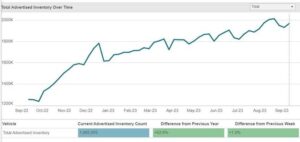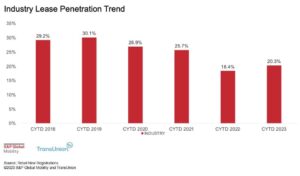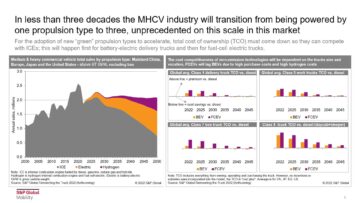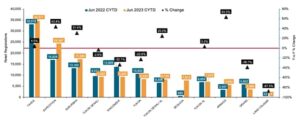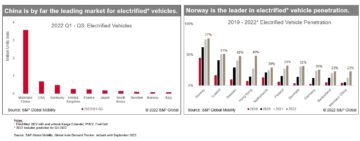Captives, banks, and many credit unions saw declines in
return-to-market loyalty, and many have yet to
recover.
Whether customers were leasing or buying vehicles, their loyalty
to automotive finance institutions eroded significantly during the
pandemic.
Across new-vehicle lease and loan, more than half of all
customers defected to a new finance source when returning to
market, with the numbers trending steadily downward from the onset
of the pandemic in early 2020 through the end of 2022, according to
analysis by S&P Global Mobility and TransUnion.
Automaker captive finance companies in particular felt the
upheaval in a turbulent marketplace, as inventory shortages made
loyalty to specific vehicle brands also plummet.
“Nearly two-thirds of consumers have been switching banks,” said
Thomas Libby, associate director of loyalty solutions and industry
analysis for S&P Global Mobility. “There’s a nomadic element to
this with households moving from one bank to another. That’s less
loyalty than the banks would like.”
At a macro level, the microchip shortage from 2020 through 2022
tilted the supply and demand balance in the direction of sellers.
Leasing took a particularly hard hit as the incentives that had
driven low monthly payments largely evaporated – there was no need
for distressed merchandise tactics, as dealers marked up rare sheet
metal as they saw fit. As a result,
consumer loyalties overall plummeted, as whichever dealers had
inventory on site saw gains, prior brand preferences be damned.
This carried over into the lending world as well.
“There was no need for any discounting,” Libby said. “The
dynamics of the market completely changed.”
At the end of 2019, four of the top-ten captives – BMW Financial
Services, Mercedes-Benz Financial, GM Financial, and World Omni
Financial (Southeast Toyota Distributors’ main lender) –
successfully retained more than half their customers returning to
market. But three years later, those numbers had dropped
dramatically, with only GM Financial managing to keep even half of
its customers, according to analysis from S&P Global Mobility
AutoCreditInsight and TransUnion.
Even the captive that topped the 2019 chart — BMW Financial
Services — managed to retain just 45.0% of returning customers,
when new-vehicle lease and loan numbers were combined, according to
S&P Global Mobility AutoCreditInsight and TransUnion. Following
GM Financial were Southeast Toyota Finance, then BMW Financial and
Ford Motor Credit.
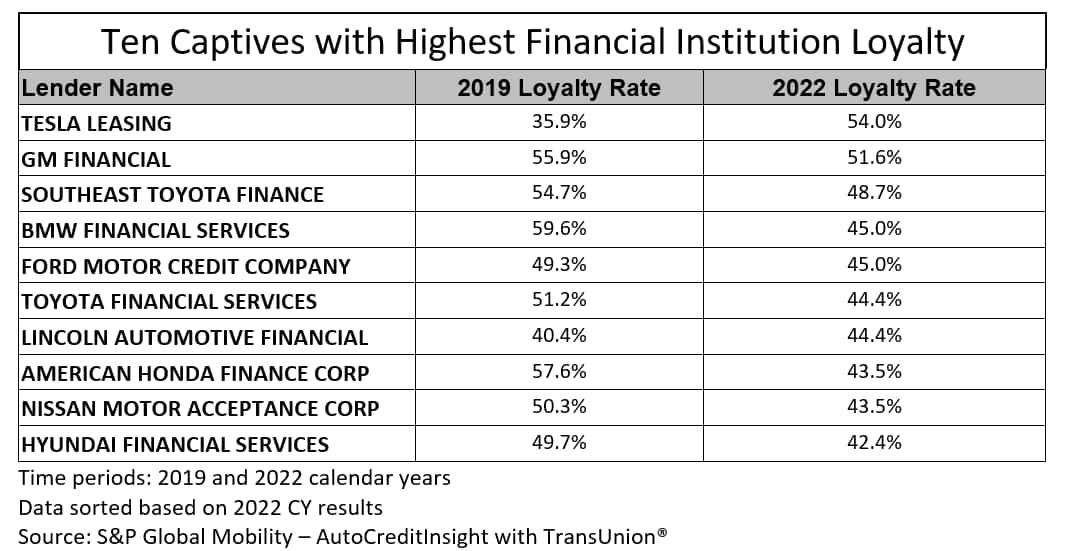
Although Tesla Leasing had a 54% loyalty to technically lead the
pack, in 2022 its return-to-market volume vastly trailed that of
more-established captives. (S&P Global Mobility’s methodology
for loyalty to the financial institution measures households that
returned to market and whether they returned to the same lending
institution.)
Meanwhile, Mercedes-Benz Financial, which was second to BMW
Financial in the calendar 2019 loyalty scores at 57.5%, dropped out
of the top 10 in calendar 2022 at 39.4%.
When asked for an explanation for their decline, a Mercedes-Benz
Financial spokesperson said, “Leasing has decreased since the
pandemic throughout the premium auto segment. Increases in lease
customers’ equity in their vehicles led to a large number of lease
buyouts in 2022, and increased interest rates led to a high number
of cash purchases. Both factors contributed to lower lease levels
than in previous years. On the financing side, higher interest
rates have also led to increased competition from traditional
lenders, in particular credit unions and regional banks.”
While all the major captives saw loyalty levels drop between
calendar 2019 and 2022, some non-captives achieved gains – albeit
with a far smaller return-to-market basis.
Some of the big gainers were Navy FCU and USAA Federal Savings
Bank. But the largest of the Top 10 non-captive lenders, JPMorgan
Chase, saw its 2019 loyalty rate fall from 37.9% to 26.1% in
calendar 2022. The leader in loyalty, the SchoolsFirst FCU
representing California teachers, is a smaller player – which could
have seen its dramatic swing having little to do with macro
conditions.
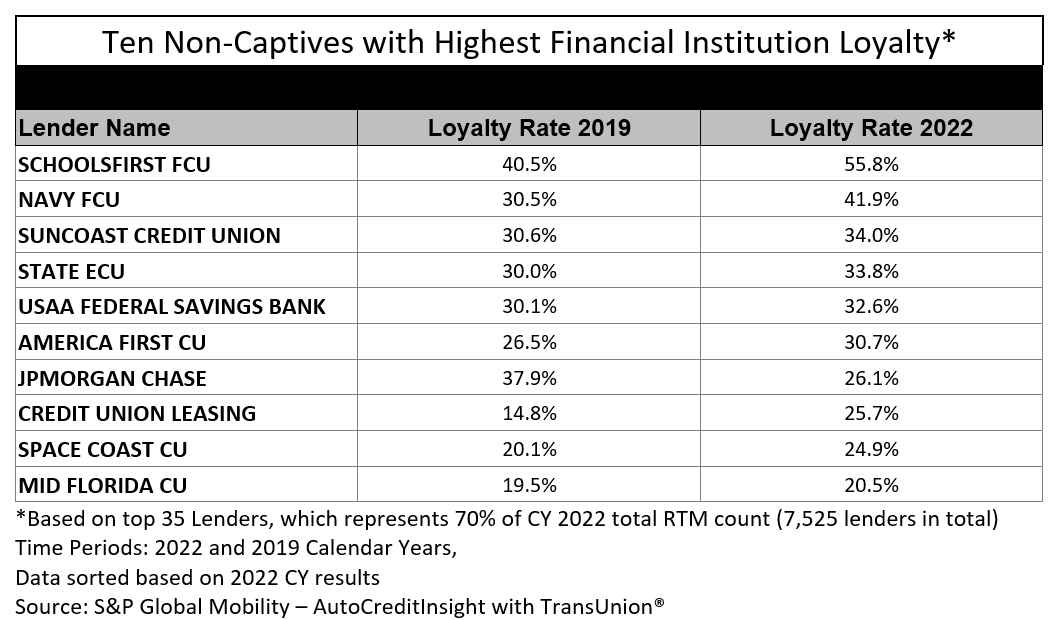
“Captive finance companies command the leasing market because they
are able to more accurately forecast residual values,” Libby said.
Pre-pandemic, the captives were able to artificially inflate
residuals, making leasing a more attractive option for
discount-conscious consumers, particularly among luxury brands. But
as inventories shrank, that advantage faded.
Indeed, the rate of leasing dropped sharply downward – from 30%
penetration in 2019 to just 18% in 2022, as more customers resorted
to borrowing or paying cash for new vehicles, according to S&P
Global AutoCreditInsight data with TransUnion.
“The whole leasing business cratered because there were no
longer any incentives,” Libby said. “Basically, the dealers have
had a huge amount of leverage because of the imbalance between
supply and demand. That affected the lease-loans ratio to a huge
extent.”
While leasing penetration skidded, loyalty to finance
institutions on the leasing side declined from 56.9% in 2019 to
52.6% in 2022, according to S&P Global Mobility
AutoCreditInsight data. Loyalty on the loan side dropped from 22.9%
to 21.9%. One caveat, Libby noted: “When a lease customer switches
to a loan, that decreases loyalty since lessees in general are more
loyal than owners.”
There were bright spots on the lease loyalty side in 2022. Both
GM Financial and Ford Motor Credit Co. stood out, retaining 69.5%
and 67.8% of returning lease customers respectively.
But as leasing slipped, the loan market grew hypercompetitive,
Libby said: “Only one out of every five customers who return with a
loan will go back to the same financial institution. That points
out how incredibly competitive the loan market is. The independent
banks are doing whatever it takes to get the business.”
World Omni Financial Corp. was best at retaining its loan
customers with 44.0% loyalty in 2022, while the Navy FCU and Toyota
Financial Services were the only other two institutions that kept
better than one-in-three loan customers loyal.
Finance institutions are fully aware of the comparative lack of
loyalty on the loan side. Said Libby: “It’s a self-fulfilling
prophecy. Because they realize the customer is so likely to switch,
they’ll be exceptionally aggressive to get the business.”
As pandemic disruptions have diminished, there are signs the
market is shifting back toward some semblance of balance. Leasing
penetration has crept back up to 20% for the first four months of
2023, but it’s still a far cry from where it was before the bottom
dropped out of the market.
AUTO-FINANCE DELINQUENCIES RISE PAST GREAT RECESSION PEAK,
BUT…
2023 AUTOMOTIVE LOYALTY AWARD WINNERS
LOWER-CREDIT BUYERS PUSHED OUT OF NEW VEHICLES
MEASURING VEHICLE LOYALTY, CONQUEST, AND DEFECTION
HOW GENERAL MOTORS MAINTAINS ITS LOYALTY LEAD AMID DECLINING
SALES
This article was published by S&P Global Mobility and not by S&P Global Ratings, which is a separately managed division of S&P Global.
- SEO Powered Content & PR Distribution. Get Amplified Today.
- PlatoData.Network Vertical Generative Ai. Empower Yourself. Access Here.
- PlatoAiStream. Web3 Intelligence. Knowledge Amplified. Access Here.
- PlatoESG. Automotive / EVs, Carbon, CleanTech, Energy, Environment, Solar, Waste Management. Access Here.
- BlockOffsets. Modernizing Environmental Offset Ownership. Access Here.
- Source: http://www.spglobal.com/mobility/en/research-analysis/consumer-loyalty-to-finance-companies-fell-sharply.html
- :has
- :is
- :not
- :where
- ][p
- $UP
- 10
- 2019
- 2020
- 2022
- 2023
- 22
- 26
- 39
- 52.6%
- 67
- a
- Able
- According
- accurately
- achieved
- ADvantage
- aggressive
- All
- also
- Amid
- among
- amount
- an
- analysis
- and
- Another
- any
- ARE
- article
- AS
- Associate
- At
- attractive
- auto
- automotive
- award
- aware
- back
- Balance
- Bank
- Banks
- Basically
- basis
- BE
- because
- been
- before
- BEST
- Better
- between
- Big
- BMW
- Borrowing
- both
- Bottom
- brand
- brands
- Bright
- business
- but
- buyers
- Buying
- Buyouts
- by
- Calendar
- california
- carried
- Cash
- changed
- Chart
- chase
- CO
- combined
- Companies
- competition
- competitive
- completely
- conditions
- consumer
- Consumers
- contributed
- Corp
- could
- credit
- Credit Unions
- customer
- Customers
- data
- Decline
- Declines
- Declining
- decreases
- Demand
- direction
- Director
- disruptions
- distressed
- distributors
- Division
- do
- doing
- downward
- dramatic
- dramatically
- driven
- Drop
- dropped
- during
- dynamics
- Early
- element
- end
- equity
- Ether (ETH)
- Even
- Every
- explanation
- extent
- factors
- Fall
- far
- Far Cry
- Federal
- finance
- financial
- financial institution
- financial services
- financing
- First
- fit
- five
- following
- For
- Ford
- Forecast
- four
- from
- fully
- Gainers
- Gains
- General
- General Motors
- get
- Global
- GM
- Go
- great
- had
- Half
- Hard
- Have
- having
- High
- higher
- Hit
- households
- How
- HTML
- HTTPS
- huge
- imbalance
- in
- Incentives
- increased
- Increases
- incredibly
- independent
- industry
- Institution
- institutions
- interest
- Interest Rates
- into
- inventory
- IT
- ITS
- JPMorgan
- just
- Keep
- kept
- Lack
- large
- largely
- largest
- later
- lead
- leader
- leasing
- Led
- lender
- lenders
- lending
- less
- Level
- levels
- Leverage
- like
- likely
- little
- ll
- loan
- longer
- Low
- lower
- loyal
- Loyalty
- Luxury
- Macro
- made
- Main
- maintains
- major
- Making
- managed
- managing
- many
- marked
- Market
- marketplace
- measures
- measuring
- merchandise
- metal
- Methodology
- mobility
- monthly
- months
- more
- Motor
- Motors
- moving
- nearly
- Need
- New
- no
- noted
- number
- numbers
- of
- Omni
- on
- ONE
- only
- Option
- or
- Other
- out
- over
- overall
- owners
- Pack
- pandemic
- particular
- particularly
- past
- paying
- payments
- Peak
- penetration
- plato
- Plato Data Intelligence
- PlatoData
- player
- Plummet
- points
- preferences
- Premium
- previous
- Prior
- published
- purchases
- pushed
- RARE
- Rate
- Rates
- ratings
- ratio
- realize
- recession
- Recover
- regional
- representing
- respectively
- result
- retain
- retaining
- return
- returning
- Rise
- s
- S&P
- S&P Global
- Said
- same
- Savings
- saw
- scores
- Second
- seen
- segment
- Sellers
- Services
- sheet
- SHIFTING
- shortage
- shortages
- side
- significantly
- Signs
- since
- site
- smaller
- So
- Solutions
- some
- Source
- specific
- spokesperson
- Still
- Successfully
- supply
- Supply and Demand
- Swing
- Switch
- tactics
- takes
- teachers
- technically
- Tesla
- than
- that
- The
- their
- then
- There.
- they
- this
- those
- three
- Through
- throughout
- to
- took
- top
- Top 10
- topped
- toward
- toyota
- traditional
- Transunion
- trending
- turbulent
- two
- two-thirds
- Unions
- upheaval
- Values
- vehicle
- Vehicles
- volume
- was
- WELL
- were
- whatever
- when
- whether
- which
- while
- WHO
- whole
- will
- with
- world
- would
- years
- yet
- zephyrnet

